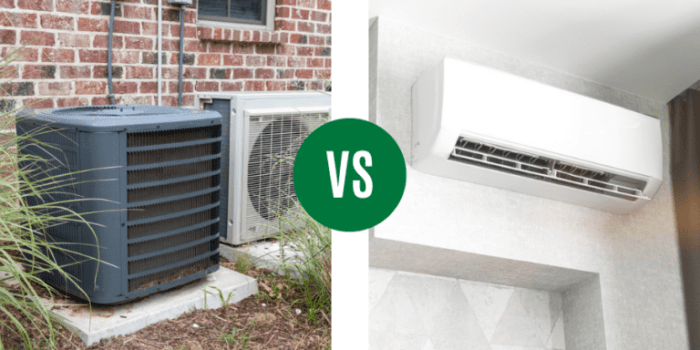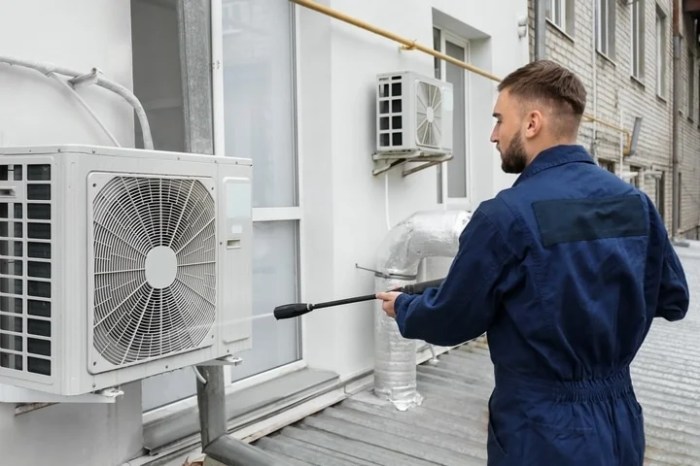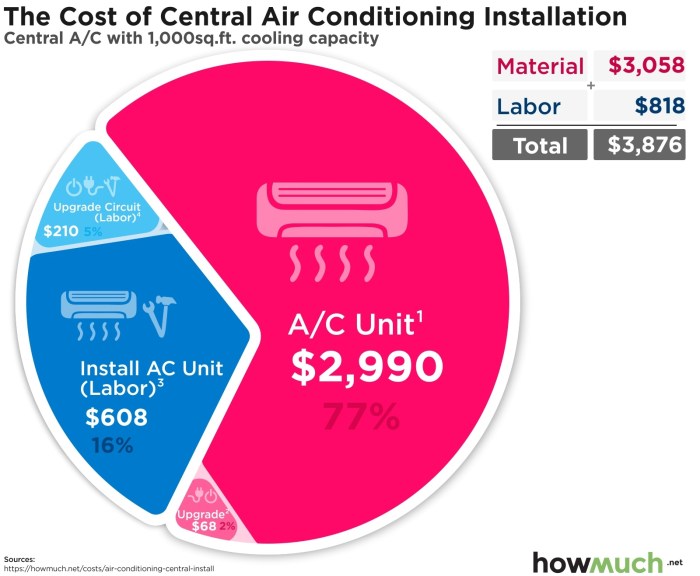How to Choose Between Split and Central Air Conditioning: A Comprehensive Guide
Exploring the decision-making process between split and central air conditioning units, this guide offers valuable insights into the key factors to consider. From installation costs to cooling capacity, this discussion aims to help you make an informed choice for your home or office.
As we delve deeper into the details, you'll gain a better understanding of the differences between these two popular air conditioning systems and how they stack up against each other.
Factors to Consider
When deciding between split and central air conditioning systems, there are several factors to consider that can impact your choice.
Installation Costs
Split air conditioning systems are generally more affordable to install compared to central air conditioning systems. Central AC requires ductwork throughout the house, which can increase installation costs significantly.
Space Requirements
Split air conditioning units require more indoor space for the air handlers, while central AC systems need space for the outdoor condenser unit. Consider your available space and layout when choosing between the two options.
Energy Efficiency
Central air conditioning systems are typically more energy-efficient than split systems, as they can cool the entire house evenly. However, split systems offer the flexibility of cooling specific zones, which can save energy if you only need to cool certain areas of your home.
Maintenance Needs and Costs
Both split and central air conditioning systems require regular maintenance to ensure optimal performance. Split systems may have lower maintenance costs since each unit operates independently, while central AC maintenance can be more complex and costly due to the interconnected ductwork.
Cooling Capacity
When comparing split and central air conditioning systems, it's important to consider the cooling capacity of each to ensure optimal performance and efficiency. Split air conditioning systems typically have a lower cooling capacity compared to central air conditioning systems. This means that split systems are more suitable for cooling smaller spaces or individual rooms rather than an entire house or building.
For example, a split system may be ideal for a single bedroom or a small living room, whereas a central system would be more appropriate for cooling multiple rooms or an entire floor of a building.In terms of cooling distribution, split air conditioning systems provide more localized cooling, allowing for better control over the temperature in specific areas.
On the other hand, central air conditioning systems distribute cooled air evenly throughout the entire space, ensuring consistent temperatures in all rooms.Both split and central air conditioning systems are effective in maintaining consistent indoor temperatures once properly sized and installed.
However, the choice between the two will ultimately depend on factors such as the size of the space, the layout of the building, and individual preferences for cooling control and efficiency.
Installation Process

Installing a new air conditioning system can be a complex process that requires careful planning and execution. Whether you choose a split or central air conditioning system, it's important to understand the steps involved in the installation process, as well as any specific requirements that may apply.
Split Air Conditioning System Installation
- Mounting the indoor unit on the wall.
- Installing the outdoor unit on a stable surface outside.
- Connecting the indoor and outdoor units with refrigerant lines and electrical wiring.
- Adding refrigerant to the system and testing for leaks.
- Setting up the thermostat and controls.
Central Air Conditioning System Installation
- Placing the central unit in a designated area, such as the attic or basement.
- Running ductwork throughout the home to distribute cool air.
- Connecting the central unit to the ductwork and power source.
- Adding refrigerant if necessary and testing the system for efficiency.
- Configuring the thermostat and controls for optimal performance.
Specific Requirements
- Split systems require a suitable location for both indoor and outdoor units, with proper spacing for airflow.
- Central air conditioning systems need enough space for ductwork and the central unit itself, which may require modifications to your home's layout.
- Both systems require professional installation to ensure proper function and efficiency.
Installation Time Comparison
Split air conditioning systems typically take less time to install compared to central air conditioning systems, as they involve fewer components and less extensive ductwork.
Considerations for Climate

When deciding between split and central air conditioning systems, it is essential to consider the climate of the region where the system will be installed. The climate can have a significant impact on the efficiency and effectiveness of the chosen system.
Performance in Different Climates
Split air conditioning systems are typically more suited for regions with moderate climates where the temperature does not fluctuate drastically. These systems work well in areas with mild summers and winters. On the other hand, central air conditioning systems are better for regions with extreme temperatures, such as very hot summers or very cold winters.
Examples of Preferred Systems
In regions like Southern California or Florida, where the climate is consistently warm throughout the year, split air conditioning systems are often preferred due to their energy efficiency and ability to provide targeted cooling. On the contrary, in areas with harsh winters like the Northeastern United States, central air conditioning is more common as it can also serve as a heating system during the colder months.
Impact on Efficiency and Effectiveness
The climate directly affects how efficiently and effectively a split or central air conditioning system operates. In hot and humid climates, central air conditioning may be more efficient in maintaining consistent indoor temperatures and reducing humidity levels. Conversely, in regions with milder climates, split systems can offer adequate cooling without the need for a centralized ductwork system.
Influence on Decision Making
Considering the climate of the location is crucial when choosing between split and central air conditioning. Factors such as temperature range, humidity levels, and seasonal variations play a significant role in determining which system will provide optimal comfort and energy efficiency for a specific environment.
Last Word
In conclusion, the choice between split and central air conditioning ultimately depends on your specific needs and preferences. By weighing the factors discussed in this guide, you can select the system that best suits your requirements for optimal comfort and efficiency.
Answers to Common Questions
What are the key differences in installation costs between split and central air conditioning?
The installation costs for split air conditioning tend to be lower compared to central air conditioning due to the simpler setup and fewer components involved.
How do split and central air conditioning systems differ in terms of maintenance needs?
Split air conditioning systems generally have lower maintenance needs and costs compared to central air conditioning systems, making them more budget-friendly in the long run.
Which regions are more suitable for split air conditioning over central air conditioning?
Regions with moderate climates or smaller living spaces are often better suited for split air conditioning systems due to their energy efficiency and flexibility in cooling specific areas.
What factors should be considered when choosing between split and central air conditioning based on climate?
Climate considerations such as humidity levels and temperature fluctuations play a crucial role in determining the effectiveness and efficiency of split versus central air conditioning systems.



